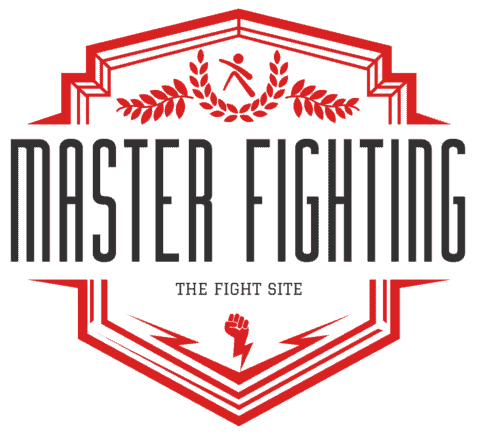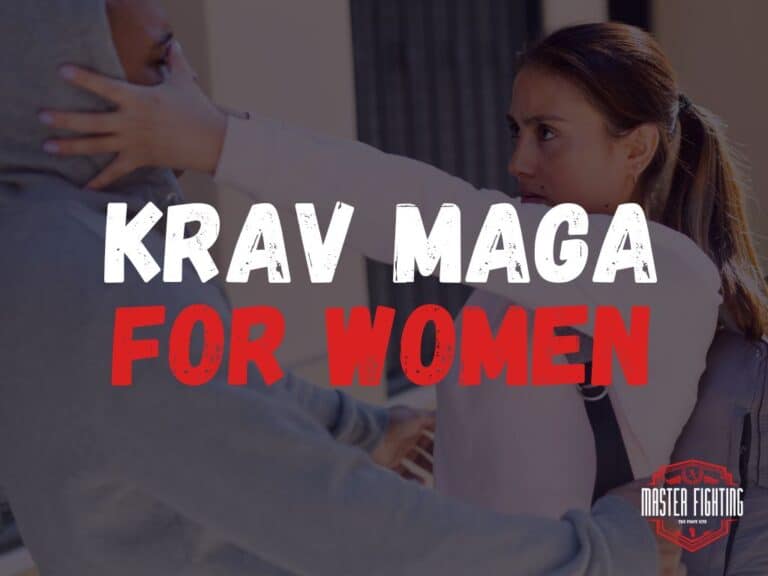History of Krav Maga
What is Krav Maga and Why is it Popular Today?
Krav Maga is a highly effective martial art and self-defence system that was developed in Israel in the 1930s. It emphasizes practical techniques that are designed to be used in real-life situations, making it an excellent choice for those who want to learn how to defend themselves both on the street and in combat situations. Krav Maga has gained worldwide popularity over the years thanks to its effectiveness, simplicity, and practicality.
It has been widely adopted by law enforcement agencies, military personnel, and civilians alike as a means of self-defence training. In fact, there are now many organizations around the world that offer certification programs in Krav Maga.

Krav Maga Origin
Krav Maga was created by Imi Lichtenfeld during the 1930s in Bratislava, Slovakia. At the time, anti-Semitic attacks were on the rise throughout Europe and Lichtenfeld needed a way to protect himself and his fellow Jewish community members from these violent assaults.
Lichtenfeld developed his own self-defence techniques based on his experiences with street fighting. He quickly realized that traditional martial arts training wouldn’t work in real-life scenarios where an attacker might use dirty tricks or ambush tactics.
As a result, he focused on developing techniques that were easy to learn and remembered under duress. After moving to Israel after World War II, Imi began teaching his new methods of self-defence to members of the Israeli Defense Forces (IDF).
Over time, he continued to refine his techniques by incorporating principles from other martial arts styles such as boxing, wrestling and judo. The result was a highly effective form of self-defence that is now widely recognized as one of the most practical and effective martial arts in the world.
The Birth of Krav Maga
From Bratislava To Israel
Krav Maga is a self-defence system that originated in Bratislava, Slovakia, during the 1930s. It was created by Imi Lichtenfeld, a Jewish athlete and boxer who had to fight against anti-Semitic attacks on the streets. With his fighting experience and knowledge of various martial arts, he developed techniques that focused on practicality and efficiency for real-life situations.
After World War II, Imi moved to Israel, where he began teaching his self-defence system to the Israeli Defense Forces (IDF). The IDF quickly adopted Krav Maga as their official training method for close-quarters combat due to its effectiveness in real-life scenarios.
Techniques for Self-Defense Against Anti-Semitic Attacks
Imi Lichtenfeld created Krav Maga out of necessity: He needed effective fighting techniques to defend himself during anti-Semitic attacks. Therefore, many of the original techniques were designed for dealing with these types of situations.
One such technique is “bursting,” which involves quickly attacking an opponent with strikes and kicks while moving forward aggressively. This technique was particularly useful when facing multiple attackers or when surprise attacks occurred.
Another technique focused on defending against knife attacks. In many cases, attackers would use knives in anti-Semitic attacks because they were readily available and easy to conceal.
Therefore, Krav Maga teaches students how to disarm an opponent quickly and effectively while minimizing the risk of injury. Krav Maga was born out of necessity during a dark time in history.
Imi Lichtenfeld’s experiences with anti-Semitic attacks led him to develop a self-defence system that prioritized practicality and efficiency for real-life scenarios. These early techniques laid the foundation for what would become one of the most popular self-defence systems in the world today.
The Evolution and Growth of Krav Maga
Imi’s Move to Israel and Teaching the Israeli Defense Forces (IDF)
After World War II, Imi Lichtenfeld moved to Israel where he began teaching Krav Maga. At first, he taught his self-defence techniques to the Israeli military personnel only.
This was a crucial time in the history of Krav Maga, as it meant that this martial art form was going to evolve into something far more significant. Imi quickly realized that his techniques were not enough to handle all of the threats that modern life presents.
Therefore, he incorporated other martial arts principles and techniques from countries around the world, mainly boxing, wrestling, judo, and karate. Consequently, Krav Maga became more well-rounded and adaptable.
Incorporation of Martial Arts Principles and Techniques from Other Countries
Krav Maga began as a practical system for self-defence in real-life situations. But Imi’s move to Israel and teaching IDF made him realize that there are always new threats and challenges in society that need new solutions. As a result, Imi started incorporating other martial arts principles into Krav Maga.
He borrowed essential moves from boxing for striking power; wrestling for grappling techniques; Judo for throws; Karate for kicks; Aikido for locks – essentially any useful technique from any discipline found its way into Krav Maga. This evolution made Krav Maga an even more formidable tool against aggression and violence.
Formation of the International Krav Maga Federation (IKMF) in 1996
The International Krav Maga Federation (IKMF) was formed by Eyal Yanilov in 1996 after leaving Imi Lichtenfeld’s organization due to differences regarding how much influence non-Israelis should have on teaching Krav Maga. The IKMF today is one of the largest martial arts organizations in the world and has certified instructors in over 60 countries. The IKMF’s aim is to teach the techniques of Krav Maga more consistently, with a focus on practicality, effectiveness, and safety.
Certifying instructors ensure that students worldwide can have access to high-quality education and training no matter where they are located. Imi Lichtenfeld’s move to Israel not only marked a significant turning point in the history of Krav Maga but also paved the way for its continued evolution.
The incorporation of other martial arts principles and techniques from around the world helped make Krav Maga a well-rounded self-defence system that is effective against any type of attack. And finally, with the establishment of the International Krav Maga Federation (IKMF), students can learn this powerful tool for self-defence anywhere in the world from certified experts who have been trained to teach it effectively.
Key Elements and Techniques Used in Krav Maga
Focus on practicality and efficiency for real-life situations
Krav Maga is a self-defence system that focuses on practicality and efficiency. It’s designed to be used in real-life situations, such as attacks on the street or in close-quarters combat scenarios. The techniques used in Krav Maga are not designed for competition but instead are meant to help people defend themselves from an attacker who wants to do them harm.
Use of strikes, kicks, grappling, and weapons defence
Krav Maga uses a variety of techniques to defend against an attacker. These include strikes such as punches and kicks, grappling techniques like throws and holds, and defence against weapons such as guns or knives.
The emphasis is on using the most effective technique for the situation at hand. One of the key aspects of Krav Maga is its focus on instinctual responses.
When under attack, people often freeze up or panic. In Krav Maga training, students learn how to react instinctually without having to think too much about what they’re doing.
Emphasis on instinctual responses rather than pre-planned moves
Krav Maga emphasizes using instinctual responses rather than relying on pre-planned moves or techniques. This allows students to react quickly in a high-pressure situation without having to think too much about what they’re doing.
To develop these instincts, Krav Maga training involves simulating real-life scenarios with attackers who are actively trying to harm the student. This type of training helps students learn how to respond quickly and effectively in high-pressure situations.
Overall, Krav Maga’s focus on practicality and efficiency makes it an effective self-defence system that can be used by anyone regardless of size or strength. With its emphasis on using instinctual responses, Krav Maga is a valuable tool for anyone looking to improve their self-defence skills.
Krav Maga Today
Popularity among Law Enforcement and Military Personnel
Krav Maga has gained widespread popularity within law enforcement agencies and military personnel worldwide for its practicality in real-life situations. Its techniques have been adopted by the Israeli Defense Forces (IDF) as well as police forces in various countries.
Krav Maga’s focus on instinctual responses rather than pre-planned moves makes it a valuable tool for anyone who may find themselves in a dangerous situation. The popularity of Krav Maga among law enforcement is due to its effectiveness against armed attackers and multiple attackers, two situations that are common in their line of work.
For example, the United States Department of Homeland Security utilizes Krav Maga as part of its training program for Immigration and Customs Enforcement (ICE) agents. Similarly, the German Police Special Units also receive training in Krav Maga.
Expansion into Different Countries
Krav Maga has spread globally and can now be found in over 60 countries around the world. Various organizations offer certification programs allowing individuals to train others in Krav Maga techniques. These organizations include The International Krav Maga Federation (IKMF), The Israeli Krav International (IKI), and The British Krav Maga Association (BKMA).
Krav Maga’s global popularity can be attributed to its practicality and effectiveness as a self-defence system. As more people become interested in learning self-defence techniques, they gravitate towards the practicality of Krav Maga over other martial arts forms which focus on traditional techniques or competition.
Ongoing Development with New Techniques
Krav Maga continues to evolve with new techniques being added regularly. The system incorporates principles from other martial arts styles such as Brazilian Jiu-Jitsu or Muay Thai, to improve the overall effectiveness of its techniques. Krav Maga instructors are encouraged to constantly develop and refine their techniques by incorporating real-life scenarios into their training programs.
This ensures that the techniques taught are relevant and effective in today’s world. The continued development of Krav Maga ensures that it remains a viable self-defence system for anyone looking to learn practical and effective techniques for self-defence.
Final Thoughts
Krav Maga has come a long way from its humble beginnings in Bratislava, Slovakia. Imi Lichtenfeld’s creation has evolved into a practical and effective self-defence system that is taught worldwide. Today, Krav Maga is used by military personnel, law enforcement agencies, and civilians alike for its practicality and efficiency in real-life situations.
Throughout its evolution, Krav Maga has remained focused on the principles of practicality and effectiveness. This is evident in the techniques used in Krav Maga, such as strikes, kicks, grappling, and weapons defence.
The emphasis on instinctual responses rather than pre-planned moves makes it an accessible self-defence system for anyone to learn. Krav Maga continues to evolve with new techniques being added to adapt to modern threats.
Its expansion into different countries with various organizations offering certification programs ensures that Krav Maga will continue to grow and develop in the future. The International Krav Maga Federation (IKMF) serves as an example of how far this self-defence system has come and how much potential it still holds.
Krav Maga’s history and evolution are a testament to its practicality and effectiveness as a self-defence system. It has grown from being created for use against anti-Semitic attacks to becoming a popular form of self-defence training worldwide.
Its focus on instinctual responses rather than pre-planned moves makes it accessible for anyone looking for effective self-defence techniques. As we move forward into the future, we can rest assured that Krav Maga will continue to grow and evolve as new threats arise – making it an essential tool for anyone seeking protection.

Author Bio
Hi, I am William. I started out in martial arts with Goshin Ju Jitsu when I was 7 years old. I am passionate about martial arts and love sharing everything I learn. I created Master Fighting to become a resource for learning about martial arts and alternative fighting styles. Learn more about me.






